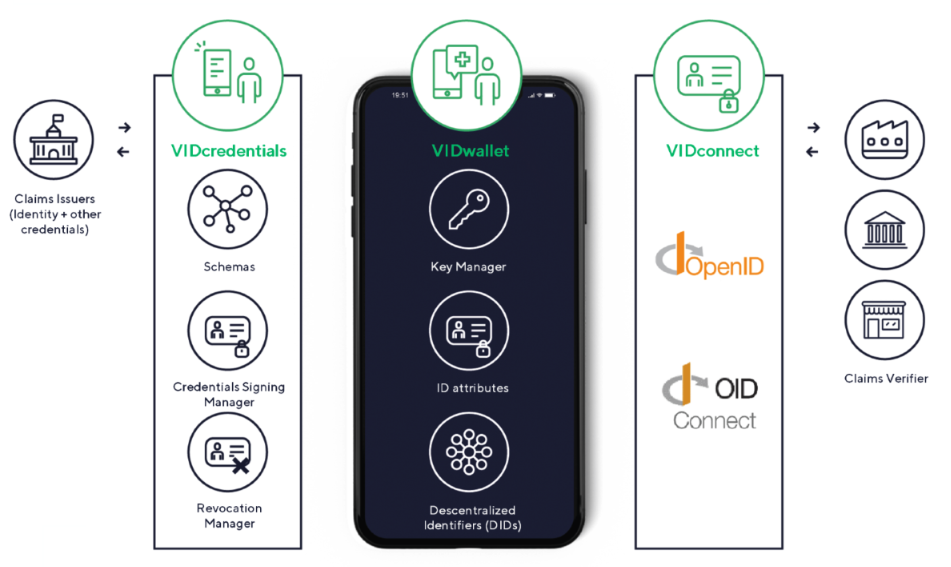VIDidentity
VIDidentity is a Self-Sovereign Identity (SSI) solution provided by Validated ID. SSI is a rather new concept for managing digital identities with the main goal to provide individuals with complete ownership and to give users back control of their data without the need for intermediaries. If you are interested in further explore SSI and its potential please check out our SSI Whitepaper.
Documentation Overview
This documentation presents several layers of information starting with information of general purpose up to integration guides together with a detailed API description for IT architects and IT developers to be able to integrate VIDidentity services into their systems. The documentation is structured in the following four sections:
- VIDidentity: This page presents an overview of VIDidentity including the main features and its components.
- Components: In this section are detailed the more relevant VIDidentity components.
- Integration Guides: The integration guides detail the necessary steps for the integration of our services into target systems.
- OpenAPIs Specifications: The section explains in detail the specifications of the APIs and supplies all the endpoints exposed for entities that either want to issue and verify credentials.
Main Features
To highlight the advantages of using VIDidentity as SSI services provider, we list below the main features of our services:
- By using our services including the identity wallet, users are in full control over their own identity data.
- SSI is GDPR compliant by design as the user has the control on the data sharing. By utilizing our services, customers will not have to worry about GDPR compliance.
- SSI vendors often depend on a distributed ledger (DL) or blockchain network. VIDidentity offers flexibility by being fully ledger agnostic. Notice that SSI does not require using a DLT.
- VIDidentity offers a passwordless authentication flow, which increases not only the user-experience but also the security since users tend to reuse username-password combinations or use easy-to-guess passwords.
- VIDidentity services can be integrated and used on different platforms such as in the web, on a web application or a mobile application.
- VIDidentity offers the service VIDcredentials Studio to manage and handle credentials including, creating, signing, issuing, storing, revoking, exchanging and presenting verifiable credentials.
- VIDidentity can generate credentials from existing IDs. For more information you can visit VIDissuer.
- The field of SSI is relatively new and standards for data formats and protocols are emerging. VIDidentity aims to be aligned with the SSI related standards such as OpenID Connect, VC W3C, DID W3C, DIF confidential storage, etc.
- VIDwallet fulfilled the EBSI compliance tests and is officially EBSI compliant and listed as EBSI compliant wallet solution1.
- VIDidentity allows users to quickly learn how SSI and VIDidentity works by providing an interactive and guided Tutorial.
Components Overview
VIDidentity is composed of different building blocks shown in the architecture figure and listed below:
- VIDcredentials Studio: this component's main purpose is to handle the credential lifecycle as well as credential related data. Handling credentials includes creating, signing and verifying verifiable credentials, but also managing schemas and the revocation management.
- VIDconnect: an OpenID Connect provider that is able to perform a DID authentication process. The OpenID Connect SIOP library, a TypeScript library, that can be used from your app to exchange credentials with VIDwallet.
- VIDwallet: a mobile application used by end-users with the main purpose to manage and store their key personal information such as identifiers and credentials.
- VIDissuer: an issuer website to that issue credentials to holders.
